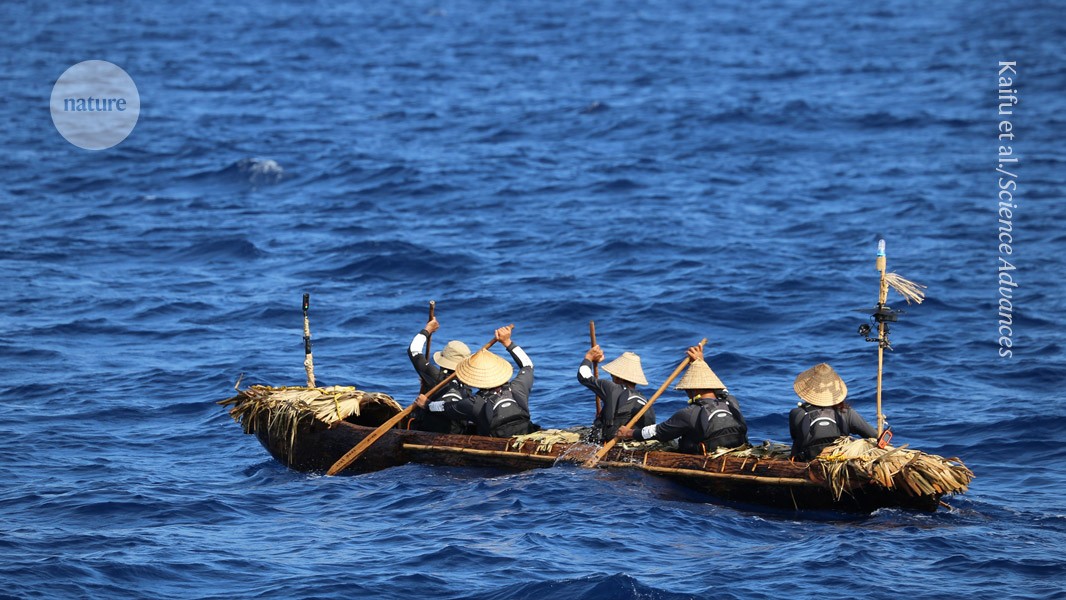These scientists re-enacted Stone-Age voyage to Japan’s remotest islands

Experiment shows how dugout canoes could have crossed treacherous straits from Taiwan to the Ryukyu Islands

Five paddlers completed a journey from Taiwan to Yonaguni Island, across some of the world’s fastest oceanic currents, without modern navigation tools.Credit: Kaifu et al./Science Advances (CC-By-ND)
Archaeologists have ‘drawn lines’ showing how Stone-Age seafarers could have discovered the southernmost islands of Japan, travelling northeast from Taiwan. But Yosuke Kaifu wanted to “know the story behind those lines”.
In a detailed reenactment of the perilous journey, Kaifu, an evolutionary anthropologist at the University Museum of the University of Tokyo, and his collaborators demonstrated how palaeolithic people could have travelled huge distances with the tools, materials, techniques and navigational skills available at the time. They describe their feat in Science Advances on 25 June,
The study highlights that “these journeys are definitely much more epic than we give them credit for”, says Eleanor Scerri, an archaeological scientist at the Max Planck Institute of Geoanthropology in Jena, Germany.
Palaeolithic sites in the Ryukyu Islands — a chain that extends over 1,100 kilometres and includes Okinawa — contain human remains and stone tools dating back to more than 30,000 years ago, suggesting that their early settlers successfully navigated there from Taiwan, crossing the Kuroshio, one of the world’s strongest ocean currents.
But exactly how they did this remains a mystery. The remains of any boats have long since rotted away, so researchers instead try to recreate voyages experimentally, using the kinds of tools and materials that humans were known to have access to at the time. Kaifu and his team began working on the Ryuku crossing in 2013, partly financing their research with crowdfunding. Their first attempts to cross on rafts made of reeds or bamboo were unsuccessful.
Slash and burn
Login or create a free account to read this content
Gain free access to this article, as well as selected content from this journal and more on nature.com
or
Sign in or create an accountdoi: https://doi.org/10.1038/d41586-025-02008-9
This story originally appeared on: Nature - Author:Katie Kavanagh
















